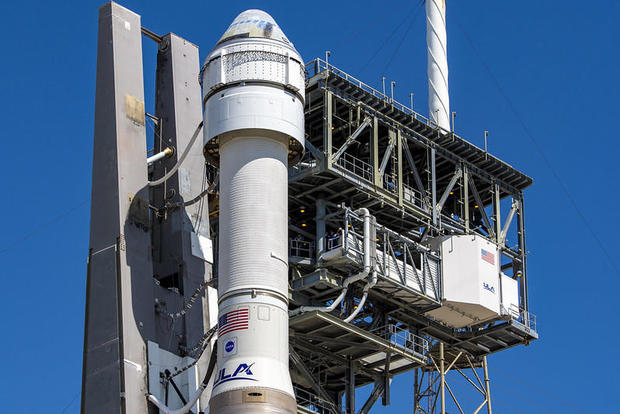
Persistent helium leak triggers additional delay for Boeing’s hard-luck Starliner spacecraft
The launch of Boeing’s already delayed Starliner spacecraft is slipping at least four more days, from next Tuesday to May 25 because of ongoing work to resolve concerns about a small helium leak in the capsule’s propulsion system, officials said Friday.
Mission commander Barry “Butch” Wilmore and co-pilot Sunita Williams are now aiming for launch from Pad 41 at Florida’s Cape Canaveral Space Force Station at 3:09 p.m. EDT a week from Saturday, setting up a docking at the International Space Station the next day, May 26, at 4:12 p.m.
The astronauts had hoped to take off on the Starliner’s first piloted test flight on May 6, but the countdown was called off because of trouble with an oxygen pressure relief valve in their Atlas 5 rocket’s Centaur upper stage.
United Launch Alliance
The Atlas 5, built by United Launch Alliance, was hauled from the pad back to the company’s nearby Vertical Integration Facility where the suspect valve was replaced and cleared for launch.
the company’s Crew Dragon spacecraft and Boeing was awarded $4.2 billion for development of the Starliner.
NASA wanted spacecraft from different builders to ensure the agency would still have a way to get astronauts to the space station even if a problem grounded one company’s ferry ship.
SpaceX launched its first two-man crew in 2020. Since then, the company has launched eight NASA-sponsored crew rotation flights to the station, three commercial research missions to the lab and a privately-funded, two-man, two-woman trip to low-Earth orbit. In all, 50 people have flown to space aboard Crew Dragons.
Wilmore and Williams will be the first astronauts to fly aboard a Starliner after a series of technical glitches that included major software problems during an initial unpiloted test flight in December 2019, and corroded propulsion system valves that delayed a second uncrewed test mission in May 2022.
Engineers ran into questions about parachute harness connectors and protective tape wrapped around wiring that posed a fire risk in a short circuit. Work to correct those issues and others delayed the first piloted launch to this month.
More
More
Source: cbsnews.com